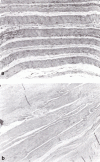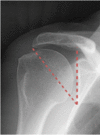Rotator Cuff Healing
- PMID: 34239192
- PMCID: PMC8249069
- DOI: 10.1055/s-0040-1713764
Rotator Cuff Healing
Abstract
The present article broadly addresses the aspects that interfere with the healing process of the rotator cuff. Life habits, such as smoking and alcoholism, are considered, systemic factors such as diabetes mellitus, hypertension, and obesity, as well as local factors, among which are those related to the pre, peri, and postoperative periods. From an extensive literature review, with the citation of 60 scientific articles from both Western and Eastern literature, the authors intend to deepen the theme by bringing to medical practice conducts based on new established concepts.
Keywords: rotator cuff injuries/diagnosis; rotator cuff injuries/epidemiology; rotator cuff injuries/surgery; wound healing.
Sociedade Brasileira de Ortopedia e Traumatologia. This is an open access article published by Thieme under the terms of the Creative Commons Attribution-NonDerivative-NonCommercial License, permitting copying and reproduction so long as the original work is given appropriate credit. Contents may not be used for commecial purposes, or adapted, remixed, transformed or built upon. ( https://creativecommons.org/licenses/by-nc-nd/4.0/ ).
Conflict of interest statement
Conflito de interesses Os autores declaram não haver conflito de interesses.
Figures






Similar articles
-
Factors affecting rotator cuff healing after arthroscopic repair: osteoporosis as one of the independent risk factors.Am J Sports Med. 2011 Oct;39(10):2099-107. doi: 10.1177/0363546511415659. Epub 2011 Aug 3. Am J Sports Med. 2011. PMID: 21813440
-
Subacromial Local Anesthetics Do Not Interfere With Rotator Cuff Healing After Arthroscopic Repair.Am J Sports Med. 2018 Apr;46(5):1097-1105. doi: 10.1177/0363546517753827. Epub 2018 Feb 22. Am J Sports Med. 2018. PMID: 29470095
-
Effect of Smoking on Healing Failure After Rotator Cuff Repair.Am J Sports Med. 2018 Oct;46(12):2960-2968. doi: 10.1177/0363546518789691. Epub 2018 Aug 21. Am J Sports Med. 2018. PMID: 30129777
-
Retear rates after rotator cuff surgery: a systematic review and meta-analysis.BMC Musculoskelet Disord. 2021 Aug 31;22(1):749. doi: 10.1186/s12891-021-04634-6. BMC Musculoskelet Disord. 2021. PMID: 34465332 Free PMC article.
-
[Progress on tendon-to-bone healing after rotator cuff repair].Zhongguo Gu Shang. 2018 Dec 25;31(12):1172-1179. doi: 10.3969/j.issn.1003-0034.2018.12.020. Zhongguo Gu Shang. 2018. PMID: 30583662 Review. Chinese.
Cited by
-
Combination of autologous osteochondral and periosteum transplantation effectively promotes fibrocartilage regeneration at the tendon-bone junction of the rotator cuff in rabbits.Knee Surg Sports Traumatol Arthrosc. 2023 May;31(5):1953-1962. doi: 10.1007/s00167-022-07250-6. Epub 2022 Dec 14. Knee Surg Sports Traumatol Arthrosc. 2023. PMID: 36515732
-
EVALUATION OF TENDON HEALING AFTER ARTHROSCOPIC REPAIR OF ISOLATED SUPRASPINATUS TEARS.Acta Ortop Bras. 2025 Jun 2;33(2):e285693. doi: 10.1590/1413-785220253302e285693. eCollection 2025. Acta Ortop Bras. 2025. PMID: 40475366 Free PMC article.
References
-
- Yamanaka K, Fukuda H, Hamada K, Nakajima T. New York: Elsevier; 1997. Histology of the supraspinatus tendon with reference to rotator cuff tears; pp. 15–18.
-
- Uthoff H K, Ishii H. New York: Elsevier; 1997. Histology of the cuff and pathogenesis of the degenerative tendinopathies; pp. 19–23.
-
- Yamaguchi K, Tetro A M, Blam O, Evanoff B A, Teefey S A, Middleton W D. Natural history of asymptomatic rotator cuff tears: a longitudinal analysis of asymptomatic tears detected sonographically. J Shoulder Elbow Surg. 2001;10(03):199–203. - PubMed
-
- Milgrom C, Schaffler M, Gilbert S, van Holsbeeck M. Rotator-cuff changes in asymptomatic adults. The effect of age, hand dominance and gender. J Bone Joint Surg Br. 1995;77(02):296–298. - PubMed
LinkOut - more resources
Full Text Sources

